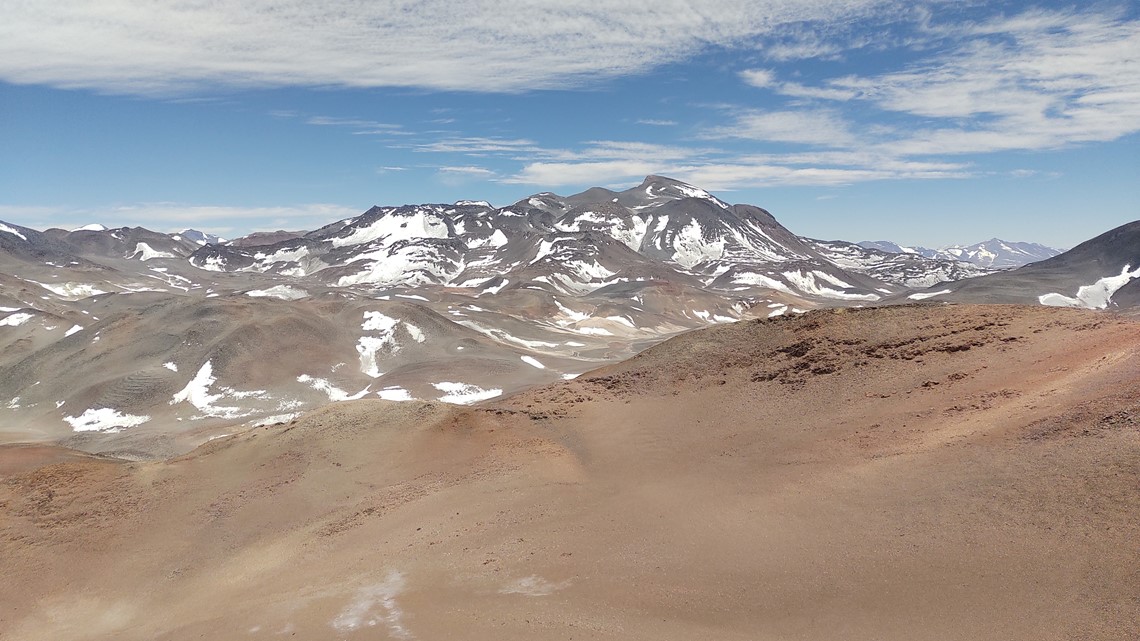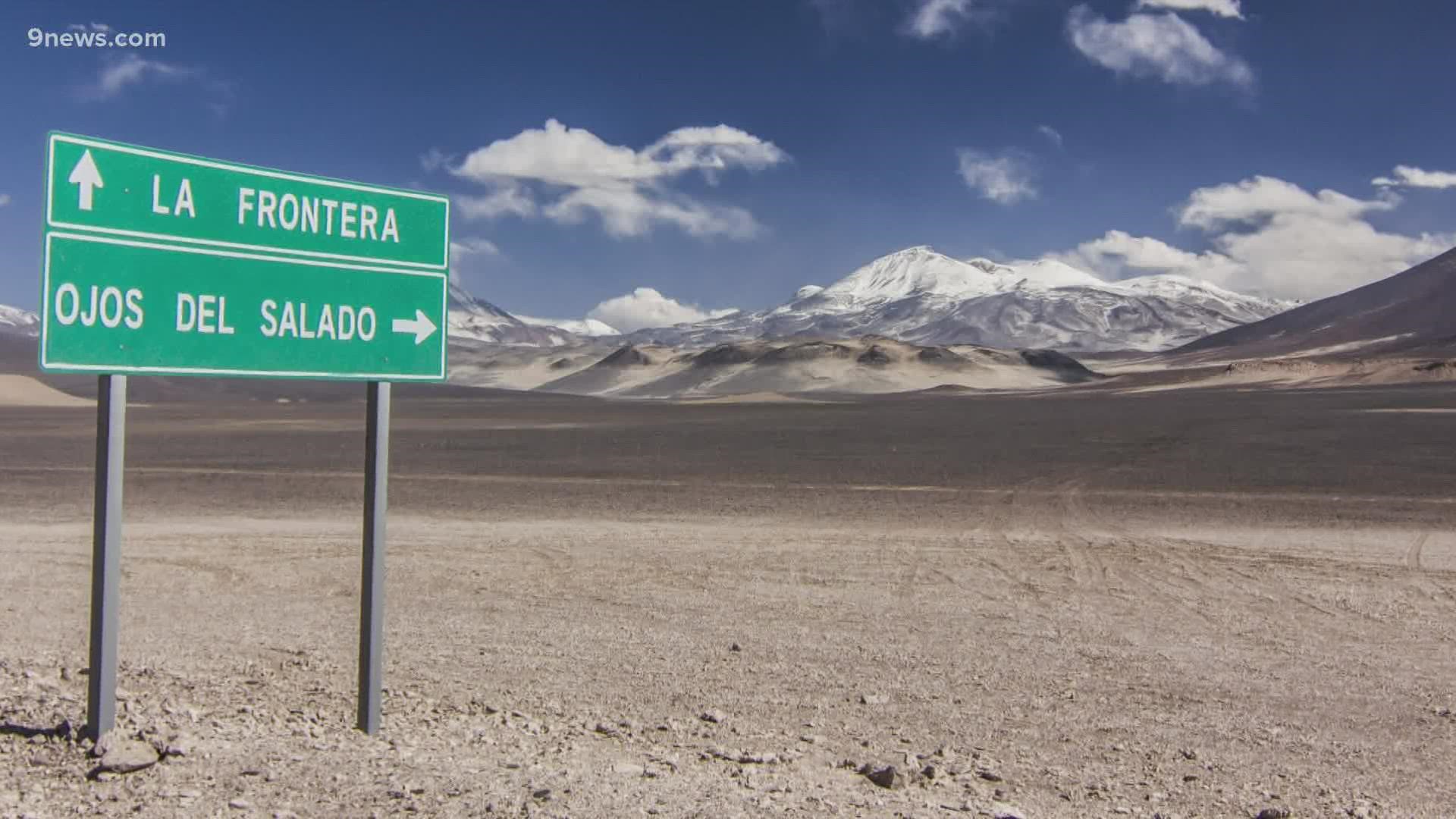BOULDER, Colo. — The summit of Ojos del Salado stands 22,615 feet above the Argentina-Chile border in the Andes mountains. It’s the highest active volcano on Earth.
Among the fields of volcanic rock are pillars of ice, salty streams, and vents with plumes of steam.
“So this is where we’re looking into a window of the past, of what Mars used to look like,” said Brian Hynek, a planetary science professor with the Laboratory for Atmospheric and Space Physics at the University of Colorado.


If microbial life did once exist on Mars, Hynek believes it would have survived in a harsh environment similar to what is now found on the South American volcano.
Hynek and two students were the first to search for microbial life on Ojos del Salado. Their two-week mission was to summit the volcano and collect samples that they could analyze back in Boulder.
“There are many questions about things that sort of live on the fringe of what’s acceptable for life here on Earth,” Hynek said.
One of the crew’s main targets was a spiky ice formation known as penitentes -- a possible safe harbor for microscopic lifeforms. These scientists believe similar formations could have once existed on Mars or may even be present on one of Jupiter’s icy moons.


“The idea of an ice structure sheltering a microbial community from radiation is one that definitely could be useful to research for something like Europa,” said Amanda Steckel, a geology Ph.D. student at CU Boulder.
Her main objective on the trip was to discover the levels of ultraviolet radiation exposure. There have been calculations and estimates made, but it's actually never been measured.
The thin atmosphere at that altitude means the bombardment from the sun's radiation would be intense, nearly constant and dangerous to all life. If there are microbes living in the ice formations, it would be important to establish a threshold of exposure and discover how they protect themselves.
The sub-freezing temperatures, along with a lack of water and oxygen on the volcano, have extraterrestrial parallels. They also make it difficult to perform scientific research.
Another one of the team's objectives was to reach the hydrothermal vents at the summit of Ojos del Salado.
"We got just above 21,000 feet and we were met with 70 mph sustained winds," Hynek said. "We waited as long as we could, but the winds only got worse from that point."
The team had to turn around and head back to basecamp. They had three more days left in their travel window, but he said the winds were at 100 mph for the rest of their trip.
"Sampling those highest steam vents in the world remains an objective for me," Hynek said. "I'll find a way to get back down there and hopefully bring some students with me."
The team did end up accomplishing a lot of science on their trip, and the research might help prove the miracle of life on Earth is not exclusive.
"To me, finding life anywhere beyond Earth would be an exceptional discovery,” he said.
SUGGESTED VIDEOS: Science & Weather

